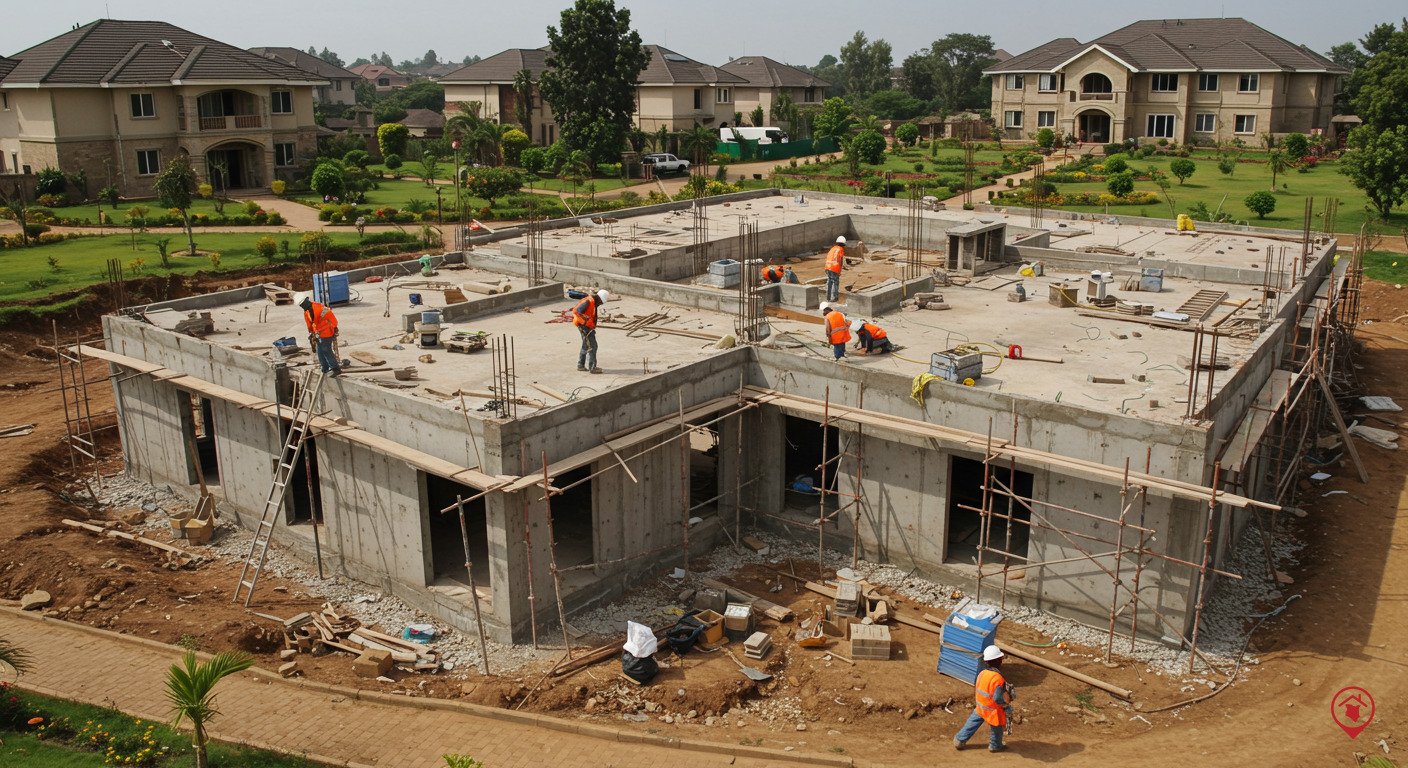Building in Kenya: 7 Mistakes That Could Cost You Millions
- As exciting as building is, it’s also one of the riskiest and most expensive projects you’ll ever take on. A single misstep can set you back millions and leave you with endless frustrations.
- Titles can be fake, plots can be double-sold, or worse, the land may already have a dispute in court.
- Many projects stall because owners run out of money halfway.
After months (or even years) of dreaming and planning, you finally decide it’s time to build, maybe a retirement home, an apartment block, or even a house for sale. You’ve settled on the location, and perhaps you’re already searching for land or have just secured a plot. Piece by piece, the puzzle is coming together, and you feel closer than ever to turning your dream into reality.
But here’s the catch: as exciting as building is, it’s also one of the riskiest and most expensive projects you’ll ever take on. A single misstep, whether it’s choosing the wrong contractor, skipping approvals, or underestimating costs can set you back millions and leave you with endless frustrations. The truth is, many people dive into construction with enthusiasm but without the right knowledge, and they end up learning painful (and costly) lessons the hard way.
That’s why in this article, I’ll walk you through 7 common mistakes people make when building in Kenya, and how you can avoid them.
READ ALSO: A Beginner’s Guide to Building a House in Kenya
1. Failing to Do Due Diligence on Land
Buying land is usually the first step, and it’s also where many people go wrong. Titles can be fake, plots can be double-sold, or worse, the land may already have a dispute in court.
How to avoid it:
- Always conduct a land search at the Ministry of Lands.
- Verify the seller’s identity and confirm the land rates are paid.
- Involve a lawyer during the transaction.
2. Skipping Approvals and Permits
Some people rush into construction without approvals, thinking it’s a waste of time or money. The risk? Hefty fines, stalled projects, or even demolition orders from the county government.
How to avoid it:
- Get your architectural plans approved by the county.
- If it’s a big project, secure NEMA approval.
- Always ask your contractor/architect to guide you through the approval process.
3. Hiring the Wrong Contractor
It’s tempting to give the job to the cheapest contractor or to a “recommended fundi.” Unfortunately, many disappear mid-project, inflate costs, or deliver substandard work.
How to avoid it:
- Vet contractors by checking their previous projects.
- Ask for references from past clients.
- Sign a clear contract with timelines, scope of work, and payment terms.
4. Underestimating the Budget
Many projects stall because owners run out of money halfway. Building is more expensive than most people assume and small costs pile up quickly.
How to avoid it:
- Work with a Quantity Surveyor to prepare a Bill of Quantities (BoQ).
- Always budget for at least 10–15% extra as a buffer.
- Stick to the plan — frequent design changes = higher costs.
5. Using Low-Quality Materials
Cheap materials may save money in the short term, but they often compromise the safety and durability of your building. A weak foundation or substandard roofing can cost millions to fix later.
How to avoid it:
- Buy materials from reputable suppliers.
- Don’t let fundis source everything without supervision.
- When possible, involve your architect or engineer in purchases.
6. Building Without Professional Supervision
Many people leave the site entirely to fundis, thinking professionals are too expensive. The result? Crooked walls, structural weaknesses, and endless “redos.”
How to avoid it:
- Hire an architect and structural engineer for design and safety.
- Engage a clerk of works or site supervisor to monitor daily progress.
- Remember: professional fees are cheaper than costly mistakes.
7. Poor Planning for Utilities and Infrastructure
Imagine finishing a beautiful home only to realise water is scarce, power is unreliable, or the access road floods every rainy season. Many overlook these practical details.
How to avoid it:
- Plan in advance for water (connection, borehole, or tanks).
- Confirm electricity availability with Kenya Power.
- Check road access and drainage before committing to a site.
READ ALSO: How to Build Cost-Effectively Without Compromising on Quality
Conclusion
Building in Kenya is an exciting journey but it’s also a serious investment that demands caution. By doing your homework, working with the right professionals, and planning thoroughly, you can avoid these costly mistakes and actually enjoy the process of bringing your dream home or project to life.








